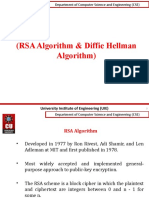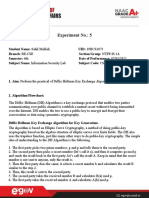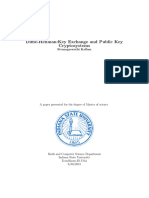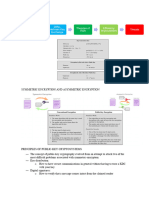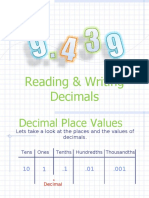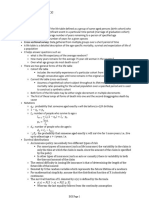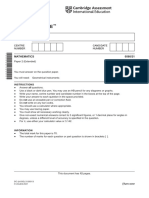0% found this document useful (0 votes)
55 views5 pagesDiffie Hellman Key Exchange Algorithm For Key Generation
The document discusses the Diffie-Hellman key exchange algorithm for generating cryptographic keys. It explains the basic steps of how two parties can generate a shared secret key to encrypt communications without having to transmit the key itself. The document also covers uses of Diffie-Hellman beyond key exchange, like encryption and password authentication, as well as advantages and disadvantages of the algorithm.
Uploaded by
shahrbano 14Copyright
© © All Rights Reserved
We take content rights seriously. If you suspect this is your content, claim it here.
Available Formats
Download as DOCX, PDF, TXT or read online on Scribd
0% found this document useful (0 votes)
55 views5 pagesDiffie Hellman Key Exchange Algorithm For Key Generation
The document discusses the Diffie-Hellman key exchange algorithm for generating cryptographic keys. It explains the basic steps of how two parties can generate a shared secret key to encrypt communications without having to transmit the key itself. The document also covers uses of Diffie-Hellman beyond key exchange, like encryption and password authentication, as well as advantages and disadvantages of the algorithm.
Uploaded by
shahrbano 14Copyright
© © All Rights Reserved
We take content rights seriously. If you suspect this is your content, claim it here.
Available Formats
Download as DOCX, PDF, TXT or read online on Scribd
/ 5




































